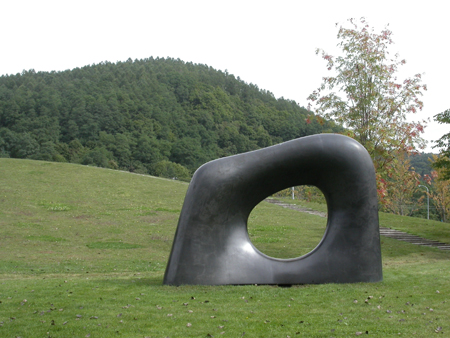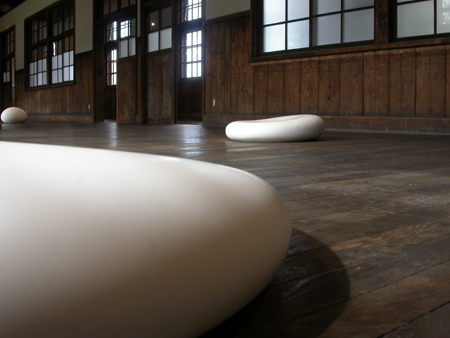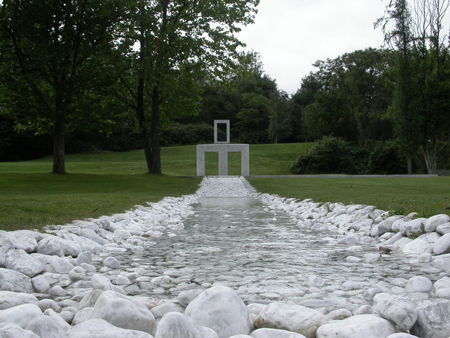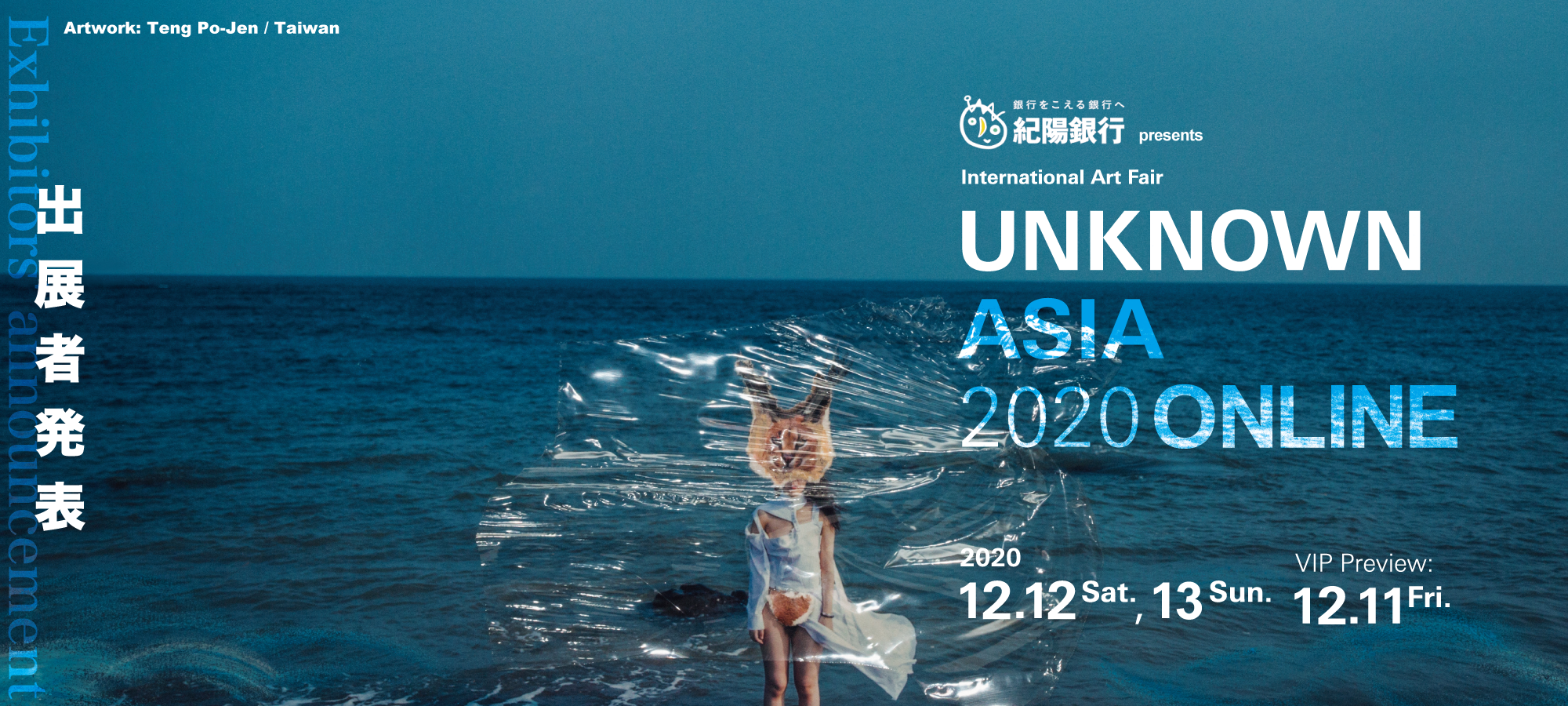ARTE PIAZZA BIBAI
All the material Yasuda use for is sculptures, marble and bronze, are about white and black, light and dark, life and death. The bronze sculptures mostly had a raw surface, while the white marble had a very smooth, delicate surface. What also was very impressive, was the contrast of the material and the nature. Leaves and grass were glowing green, under the sun and then this white marble in it, just amazing, beautiful.
All the big sculptures were placed in the garden, and some small one’s in the old school building and the gym. The renovated school building is build of old floorboards and wooden panels on the walls. The floorboards are creaking when you walk on it, create a nostalgic atmosphere. Probably also because they absorbed the memories of the students who learned there. Also there you have a beautiful contrast between the old, brown, earth based wood and the glowing white marble, placed everywhere in the building. Something the gym building, the interior of the wooden building, with typical pre-war round ceiling, had somehow kept his plain but appealing warmth.
An other element Kan Yasuda use for his sculptures is water, between the school and the gym was made a water playground, called “Tenmoku”. The playground consist of a marble gate with three pillars, one of them hang lightly over the water channel. The two other pillars are based on a marble floor. The sculpture is on the one hand static on the other moved. The water flowing beneath “Tenmoku” represents the passage of time. The narrow between the stone and the surface of the water represents the space between heaven and earth.
This place looked to me like a big playground for children and the education house in the middle. I read later that Kan Yasuda was inspired, to make the plaza by and for the children, our future.
Read more ...










